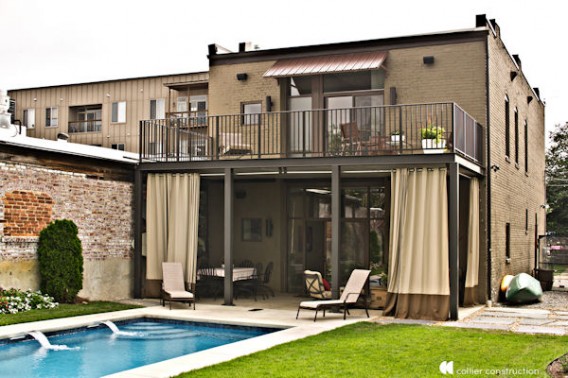
Incorporated in 1839, Chattanooga, Tennessee was a boom town by the time the railroad arrived in 1850. “Where the cotton meets the corn,” Chattanooga had a strategic cultural location between the north and the south, which put it in proximity of some of the worst of the Civil War battles. By 1969, the industrialized city of Chattanooga had been declared by the federal government to have the nation’s dirtiest air.
Shovel all the coal in
Gotta keep it rollin’
Woo, woo, Chattanooga there you are
-from Chattanooga Choo Choo (words by Mack Gorden, music by Harry Warren)
Recent efforts by the private and government sectors to revitalize areas of downtown and the riverfront have won the city several national and regional awards for livability, excellence in housing, and consolidated planning.

On Williams Street in Chattanooga’s Southside neighborhood, a manufacturing nucleus turned arts district, this 1920s grocery store, most recently used for office space and now renovated to be a single-family residence, sits with an east-west orientation on a 25-foot by 80-foot city lot. On its north side is a brick warehouse.
A three-brick-wide, load-bearing masonry wall, to which closed-cell spray insulation and drywall was applied, provides a thermal break. However, Ethan Collier of Collier Construction, said that encapsulating the envelope was a challenge.
Brad Shelton of Elemi Architects was challenged to create passive sustainability with the original orientation and massing, but the eastern side was opened up as much as structurally possible to obtain the most from daylighting potential. An exterior patio was created for the second floor master bedroom, doubling as shade and a covered patio for the kitchen on the first floor.
Southern windows were double-glazed, and sun analysis led the decision to insert a north-facing roof monitor that diffuses daylighting into the second floor and another skylight that pushes daylight through the stairwell to the dining area.
Setting a new standard, the three bedroom, two and one-half bathroom home has sparked interest sufficient to influence the undertaking of two similar projects on Williams Street.

Leave a Reply
You must be logged in to post a comment.